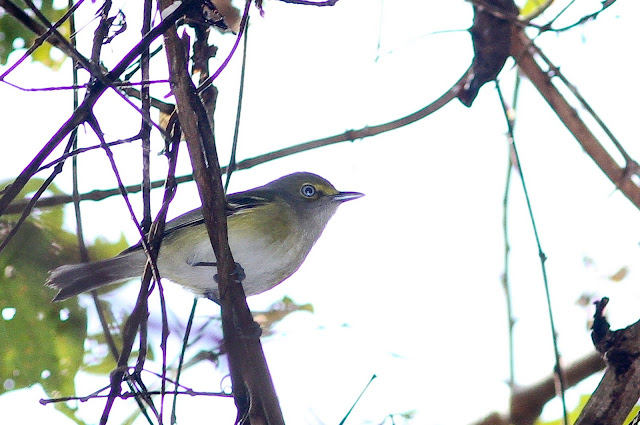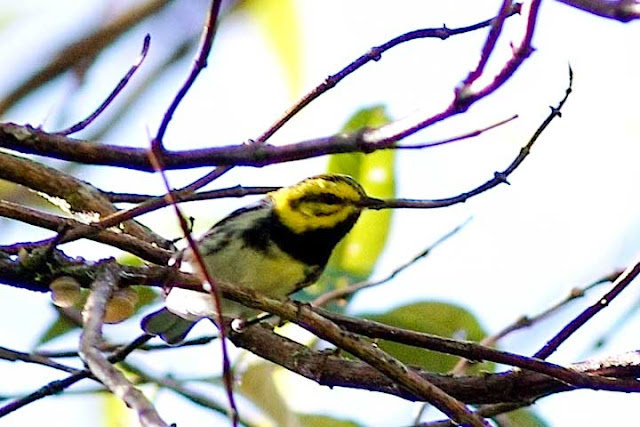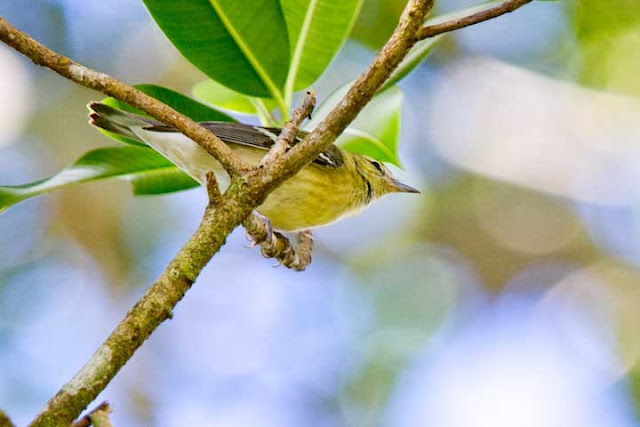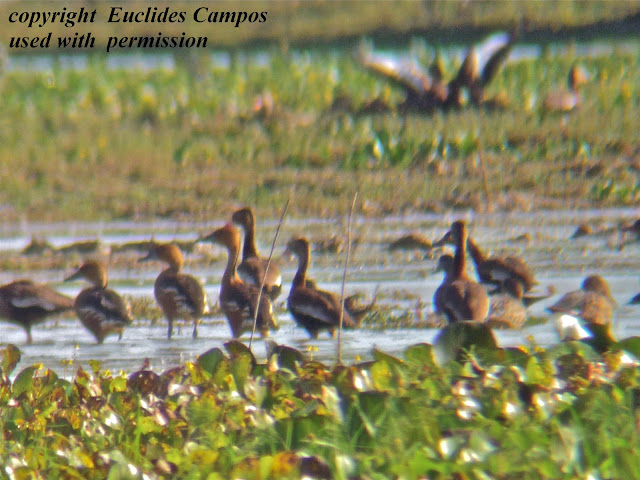Blue-winged Warbler in Pipeline Road, a report by George Angehr
This morning I went to Pipeline Road in search of the female Blue-winged Warbler that was found by Jan Axel Cubilla and others on Pipeline Road near the entrance to the Panama Rainforest Discovery Center. I failed to find it, but while I was looking I met Swiss birder Jerome Fischer, who told me that he had seen a male near the Pipeline Road entrance earlier in the morning. I went to the spot, played the call, and the bird immediately popped out. It's at the ACP gate on the road just beyond the entrance to Pipeline. When I saw it, the bird was in the scrubby clearing just before the gate. Jerome found it with a mixed flock just beyond the gate.















